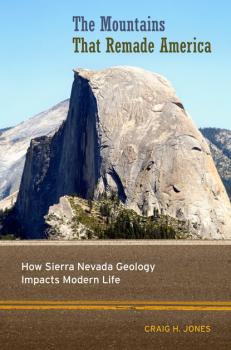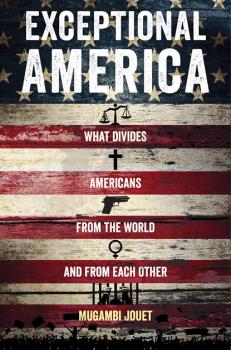MREADZ.COM - много разных книг на любой вкус
Скачивание или чтение онлайн электронных книг.Terror in the Mind of God, Fourth Edition
Why would anybody believe that God could sanction terrorism? Why has the rediscovery of religion’s power in recent years manifested in such a bloody way? What, if anything, can be done about it?<BR />  <BR /><I>Terror in the Mind of God</I>, now in its fourth edition, answers these questions and more. Thoroughly revised and expanded, the book analyzes in detail terrorism related to almost all the world’s major religious traditions: European Christians who oppose Muslim immigrants; American Christians who support abortion clinic bombings and militia actions; Muslims in the Middle East associated with the rise of ISIS, al Qaeda, and Hamas; Israeli Jews who support the persecution of Palestinians; India's Hindus linked to assaults on Muslims in the state of Gujarat and Sikhs identified with the assassination of Indira Gandhi; and Buddhist militants in Myanmar affiliated with anti-Muslim violence and in Japan with the nerve gas attack in Tokyo’s subway.<BR />  <BR /> Drawing from extensive personal interviews, Mark Juergensmeyer takes readers into the mindset of those who perpetrate and support violence in the name of religion. Identifying patterns within these cultures of violence, he explains why and how religion and violence are linked and how acts of religious terrorism are undertaken not only for strategic reasons but to accomplish a symbolic purpose. <I>Terror in the Mind of God </I>continues to be an indispensible resource for students of religion and modern society.
Jailcare
Thousands of pregnant women pass through our nation’s jails every year. What happens to them as they carry their pregnancies in a space of punishment? In this time when the public safety net is frayed, incarceration has become a central and racialized strategy for managing the poor. Using her ethnographic fieldwork and clinical work as an ob-gyn in a women’s jail, Carolyn Sufrin explores how jail has, paradoxically, become a place where women can find care. Focusing on the experiences of incarcerated pregnant women as well as on the practices of the jail guards and health providers who care for them, Jailcare describes the contradictory ways that care and maternal identity emerge within a punitive space presumed to be devoid of care. Sufrin argues that jail is not simply a disciplinary institution that serves to punish. Rather, when understood in the context of the poverty, addiction, violence, and racial oppression that characterize these women’s lives and their reproduction, jail can become a safety net for women on the margins of society.
The Mountains That Remade America
From ski towns to national parks, fresh fruit to environmental lawsuits, the Sierra Nevada has changed the way Americans live. Whether and where there was gold to be mined redefined land, mineral, and water laws. Where rain falls (and where it doesn’t) determines whose fruit grows on trees and whose appears on slot machines. All this emerges from the geology of the range and how it changed history, and in so doing, changed the country.<BR />  <BR /><I>The Mountains That Remade America</I> combines geology with history to show how the particular forces and conditions that created the Sierra Nevada have effected broad outcomes and influenced daily life in the United States in the past and how they continue to do so today. Drawing connections between events in historical geology and contemporary society, Craig H. Jones makes geological science accessible and shows the vast impact this mountain range has had on the American West.
Coasts in Crisis
Coastal regions around the world have become increasingly crowded, intensively developed, and severely exploited. Hundreds of millions of people living in these low-lying areas are subject to short-term coastal hazards such as cyclones, hurricanes, and destruction due to El Niño, and are also exposed to the long-term threat of global sea-level rise. These massive concentrations of people expose often-fragile coastal environments to the runoff and pollution from municipal, industrial, and agricultural sources as well as the impacts of resource exploitation and a wide range of other human impacts. Can environmental impacts be reduced or mitigated and can coastal regions adapt to natural hazards?<BR />  <BR /><I>Coasts in Crisis</I> is a comprehensive assessment of the impacts that the human population is having on the coastal zone globally and the diverse ways in which coastal hazards impact human settlement and development. Gary Griggs provides a concise overview of the individual hazards, risks, and issues threatening the coastal zone.
Caravan of Martyrs
What compels a person to strap a vest loaded with explosives onto his body and blow himself up in a crowded street? Scholars have answered this question by focusing on the pathology of the “terrorist mind” or the “brainwashing” practices of terrorist organizations. In <I>Caravan of Martyrs</I>, David Edwards argues that we need to understand the rise of suicide bombing in relation to the cultural beliefs and ritual practices associated with sacrifice.<BR /><BR /> Before the war in Afghanistan began, the sacrificial killing of a sheep demonstrated a tribe’s desire for peace. After the Soviet invasion of 1979, as thousands of people were killed, sacrifice took on new meanings. The dead were venerated as martyrs, but this informal conferral of status on the casualties of war soon became the foundation for a cult of martyrs exploited by political leaders for their own advantage. This first repurposing of the machinery of sacrifice set in motion a process of mutation that would lead nineteen Arabs who had received their training in Afghanistan to hijack airplanes on September 11 and that would in time transform what began as a cult of martyrs created by a small group of Afghan jihadis into the transnational scattering of suicide bombers that haunts our world today.<BR /><BR /> Drawing on years of research in the region, Edwards traces the transformation of sacrifice using a wide range of sources, including the early poetry of jihad, illustrated martyr magazines, school primers and legal handbooks, martyr hagiographies, videos produced by suicide bombers, the manual of ritual instructions used by the 9/11 hijackers, and Facebook posts through which contemporary “Talifans” promote the virtues of self-destruction. 
A History of Cookbooks
A History of Cookbooks provides a sweeping literary and historical overview of the cookbook genre, exploring its development as a part of food culture beginning in the Late Middle Ages. Studying cookbooks from various Western cultures and languages, Henry Notaker traces the transformation of recipes from brief notes with ingredients into detailed recipes with a specific structure, grammar, and vocabulary. In addition, he reveals that cookbooks go far beyond offering recipes: they tell us a great deal about nutrition, morals, manners, history, and menus while often providing entertaining reflections and commentaries. This innovative book demonstrates that cookbooks represent an interesting and important branch of nonfiction literature.
Thoreau and the Language of Trees
Trees were central to Henry David Thoreau’s creativity as a writer, his work as a naturalist, his thought, and his inner life. His portraits of them were so perfect, it was as if he could see the sap flowing beneath their bark. When Thoreau wrote that the poet loves the pine tree as his own shadow in the air, he was speaking about himself. In short, he spoke their language.<BR /><BR /> In this original book, Richard Higgins explores Thoreau’s deep connections to trees: his keen perception of them, the joy they gave him, the poetry he saw in them, his philosophical view of them, and how they fed his soul. His lively essays show that trees were a thread connecting all parts of Thoreau’s being—heart, mind, and spirit. Included are one hundred excerpts from Thoreau’s writings about trees, paired with over sixty of the author’s photographs. Thoreau’s words are as vivid now as they were in 1890, when an English naturalist wrote that he was unusually able to “to preserve the flashing forest colors in unfading light.” <I>Thoreau and the Language of Trees</I> shows that Thoreau, with uncanny foresight, believed trees were essential to the preservation of the world.
Exceptional America
Why did Donald Trump follow Barack Obama into the White House? Why is America so polarized? And how does American exceptionalism explain these social changes?<BR />  <BR /> In this provocative book, Mugambi Jouet describes why Americans are far more divided than other Westerners over basic issues, including wealth inequality, health care, climate change, evolution, gender roles, abortion, gay rights, sex, gun control, mass incarceration, the death penalty, torture, human rights, and war. Raised in Paris by a French mother and Kenyan father, Jouet then lived in the Bible Belt, Manhattan, and beyond. Drawing inspiration from Alexis de Tocqueville, he wields his multicultural sensibility to parse how the intense polarization of U.S. conservatives and liberals has become a key dimension of American exceptionalism—an idea widely misunderstood as American superiority. While exceptionalism once was a source of strength, it may now spell decline, as unique features of U.S. history, politics, law, culture, religion, and race relations foster grave conflicts. They also shed light on the intriguing ideological evolution of American conservatism, which long predated Trumpism. Anti-intellectualism, conspiracy-mongering, a visceral suspicion of government, and Christian fundamentalism are far more common in America than the rest of the Western world—Europe, Canada, Australia, and New Zealand. <I>Exceptional America </I>dissects the American soul, in all of its peculiar, clashing, and striking manifestations.<BR />
Grand Canyon For Sale
Grand Canyon For Sale is a carefully researched investigation of the precarious future of America’s public lands: our national parks, forests, wildlife refuges, monuments, and wildernesses. Taking the Grand Canyon as his key example, and using on-the-ground reporting as well as scientific research, Stephen Nash shows how accelerating climate change will dislocate wildlife populations and vegetation across hundreds of thousands of square miles of the national landscape.   In addition, a growing political movement, well financed and occasionally violent, is fighting to break up these federal lands and return them to state, local, and private control. That scheme would foreclose the future for many wild species, which are part of our irreplaceable natural heritage, and also would devastate our national parks, forests, and other public lands.   To safeguard wildlife and their habitats, it is essential to consolidate protected areas and prioritize natural systems over mining, grazing, drilling, and logging. Grand Canyon For Sale provides an excellent overview of the physical and biological challenges facing public lands. The book also exposes and shows how to combat the political activity that threatens these places in the U.S. today.
The New Food Activism
The New Food Activism explores how food activism can be pushed toward deeper and more complex engagement with social, racial, and economic justice and toward advocating for broader and more transformational shifts in the food system. Topics examined include struggles against pesticides and GMOs, efforts to improve workers’ pay and conditions throughout the food system, and ways to push food activism beyond its typical reliance on individualism, consumerism, and private property. The authors challenge and advance existing discourse on consumer trends, food movements, and the intersection of food with racial and economic inequalities.









